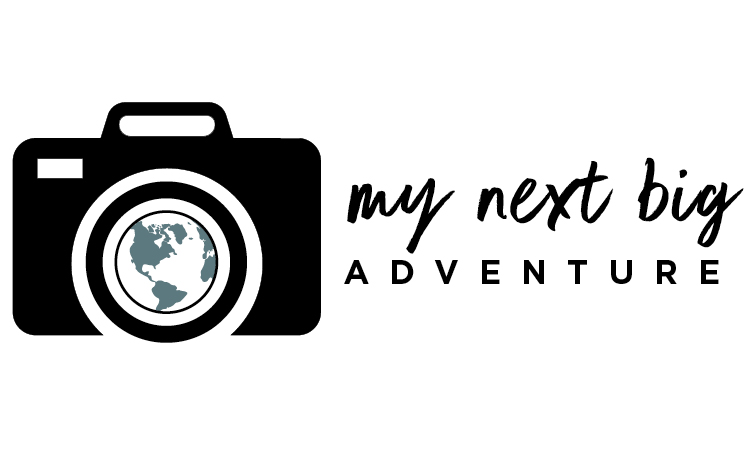Most travelers to Croatia stick to the edges – to the Adriatic’s sun-kissed coast and glittery islands.
Tourists flock to all these seaside spots for good reason. But if you’re planning a trip to Croatia, be sure to head inland to Plitvice Lakes, the country’s oldest and largest national park, established as such in 1949.
Plitvice may seem a little “out of the way” especially if you’re short on time, but it is 100% worth the effort. My husband and I travelled throughout Croatia for two weeks in September – our first “empty-nester” vacation – and Plitvice was most definitely a highlight of the trip.
Now that I’ve been to Plitvice, I’d like to share my insights for making the most of your visit to this incredible natural wonder. Feel free to read this entire guide or skip around to the sections below.
Where is Plitvice?
Plitvice National Park is located roughly in the center of Croatia – a bit further to the north – and close to the Bosnia and Herzegovina border. Approximate driving distances and times from major Croatian cities and towns (the fastest routes) are as follows:
Zadar: 119km, 1-1/2 hours
Zagreb: 130km, 2 hours
Rovinj: 240km, 3 hours
Split: 243km, 2-1/2 hours
Pula: 258km, 3-1/2 hours
Dubrovnik: 432km, 5 hours
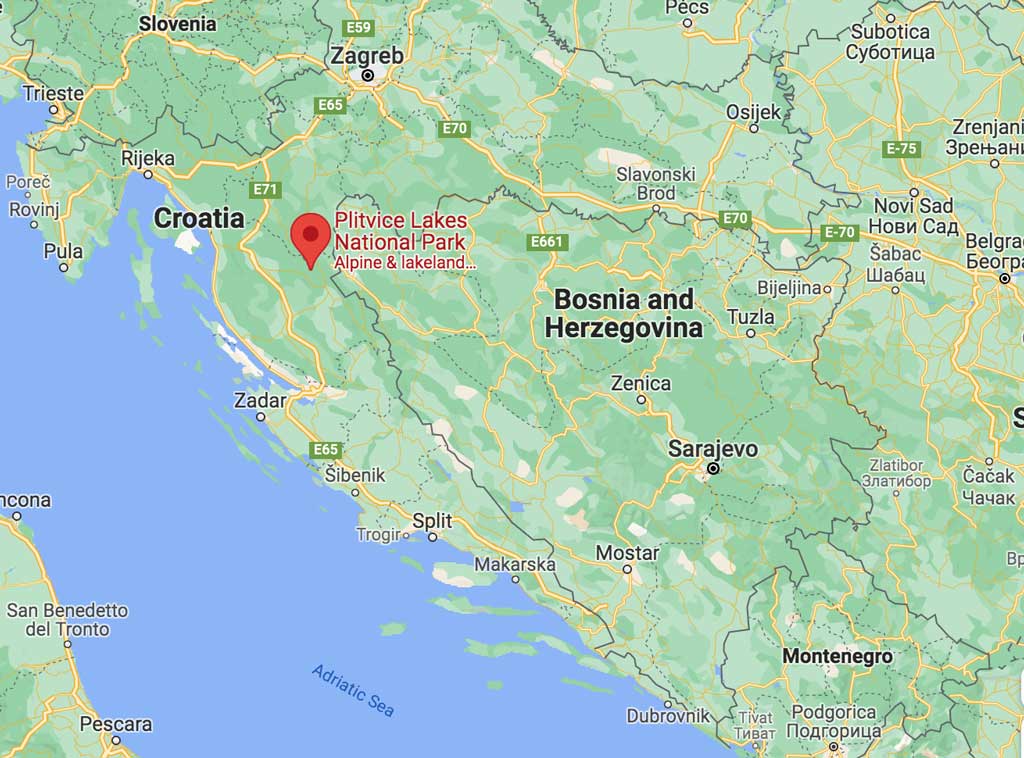
Best Time of Year to Visit Plitvice
Plitvice is open 365 days a year but during the winter months parts of it will be closed, hours are shorter because it gets dark earlier, and of course, it’s cold and could be snowy. On the upside, you won’t have to contend with too many other visitors, and after it has snowed, Plitvice looks like a winter wonderland.
The busiest time of year at Plitvice is July and August (and to a lesser extent, June), when tourists make a beeline to Croatia in general. The park is beautiful in the summer, but the crowds are intense. Be prepared to wait in lines and jockey for elbow space.
The best time to visit, if you can, is during the shoulder season – April, May, September, and October – when the weather is still pleasant, but the crowds have thinned out.
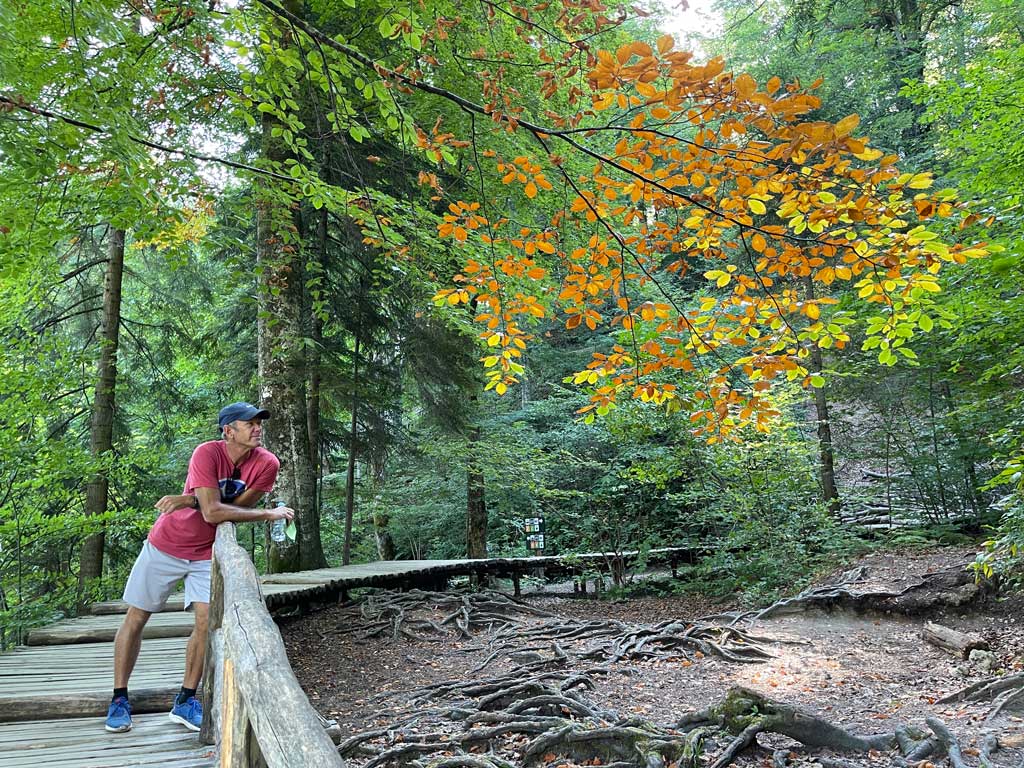
We went in mid-September. While there were definitely lots of people (especially midday), we managed to avoid the brunt of the crowds. The weather was perfect, and the trees were just starting to reveal their autumn hues. From pictures I’ve seen, October looks absolutely spectacular with the foliage on full display!
Hours of Operation & Best Time of Day to Visit
During the summer months the park is open from 7am to 8pm. In spring and fall, it is open from 8am to 6pm, and in winter, from 8am to 3pm.
Early morning (7 – 11am) and after 4pm (except in winter when it closes early) is best. In the summer especially, the park is jam packed between roughly 10am and 3pm when tours from Zadar, Zagreb, and Split arrive with busloads of day-trippers. This is why I highly recommend staying at Plitvice for more than a day.
How to Buy Tickets
It’s best to purchase tickets in advance from the Plitvice website. You need to select your desired day and time of arrival, and the system will display availability. On the day of your visit, you will have one hour from your stated arrival time to enter the park. Your ticket will be good all day even if you leave and come back.
Two-day tickets are also available for a small discount, and there may be a limited number of tickets available at the box office on the day of your visit.
When we were there, the adult, one-day entrance fee was 300 kn, which is about $50. June through September is the most expensive time to visit, while November through March is less than a third of the price.
Tickets for children ages 7 to 18 years is about half the price of an adult ticket, while children 6 years and under are free.
How Much Time Do You Need at Plitvice?
Ideally, you should plan to stay overnight at one of the hotels in the park or in accommodations close by. This allows you to spread your visit out over two days or at least get into the park early – before the crowds – if you’re only able to spend one day.
If you’re not able to stay overnight, I would recommend trying your best to be in the park for at least a few hours – the more and earlier the better.
If you’ve already been to Croatia or you’re an outdoor enthusiast, you may want to spend several days exploring the wider area outside the park, too. The landscape is beautiful, and you’ll find all kinds of adventurous pursuits – hiking, rafting, kayaking, rock climbing, caving, you name it.
How to Get to Plitvice
By car
Driving by car is the easiest way to get to Plitvice as it allows you the most flexibility in your schedule and gives you the opportunity to explore and stop along the way.
We had a rental car for our trip, which also made it easier to stay a little outside the park at a pleasant and inexpensive sobe (basically a bed and breakfast run by a local family).
The roads in Croatia are excellent so driving isn’t much of an issue. But be sure to map your trip in advance. There is usually more than one way to go, and depending on how adventurous you are, you’ll want to know what to expect.
Generally, the faster, most convenient routes are on toll roads so be prepared to shell out cash or your credit card. The distances and times I mentioned earlier in this post reflect the fastest routes.
On our trip to Plitvice (we drove from the smaller town of Rovinj on the Istrian peninsula), we ended up at one point on a one-lane road in the middle of nowhere. I believe it was the “old road” to Plitvice. It was beautiful – and I loved seeing the countryside – but it was also nerve wracking given our unfamiliarity with the area and the fact that were driving a stick shift. Fortunately, we had a full tank of gas!
By bus
If you don’t have a car, there are a number of bus options for travel to Plitvice, with Zagreb, Croatia’s capital, and Zadar being your best starting points, especially if your itinerary calls for only a day trip to the park. Keep in mind there’s more frequent bus service to Plitvice during the busier summer months, June through September.
For bus routes and booking information throughout Croatia, I recommend the following agencies:
Arriva: https://www.arriva.com.hr/en-us/home
Flix Bus: https://www.flixbus.com/bus/croatia
Zadar is the closest major city to Plitvice. The trip takes about three hours, making a day trip here viable.
There are also numerous bus options from Zagreb. While the capital city is further from Plitvice than Zadar, the bus trip is a little shorter – 2-1/2 hours – making a day trip from here possible as well.
Even though Split isn’t technically that far from Plitvice, it’s a little trickier to get from there by bus, taking anywhere from 3-1/2 to 6 hours, depending on the route and number of stops your bus makes. Generally, the morning buses take less time. Honestly, I would not do a day trip to Plitvice by bus from Split.
You might be wondering how to pair Plitvice with Dubrovnik. You definitely don’t want to do a day trip from here. My recommendation is to go to Plitvice, then head to the coast (e.g. Split or Zadar and the islands) and finally Dubrovnik . . . or vice versa.
There is always the option of going to Plitvice as part of an organized tour. I am not making any recommendations here since I’m not familiar with any in particular, but a quick Google search should pull up plenty of options.
Finally, in case you’re wondering . . . the train is not an option for traveling to Plitvice, as rail services are very limited in Croatia.
Parking at Plitvice
There are two main entrances at Plitvice – Entrance 1 and Entrance 2. Each entrance has a large parking lot, which you pay for separately from your entrance ticket.
Between June and September, an automobile costs 10 kn/hour (about $1.60/hour). The price is 8 kn/hour (about $1.30/hour) during the rest of the year. See the park’s website for current rates.
If you are staying at one of the hotels within the park, parking is included in your entrance fee. More on that below.
Overview of the Park
Covering more than 100 square miles, Plitvice is comprised of countless magical waterfalls that spill into 16 brilliant, aquamarine lakes roughly divided into two sections – the Lower Lakes (4 lakes) and the Upper Lakes (12 lakes).
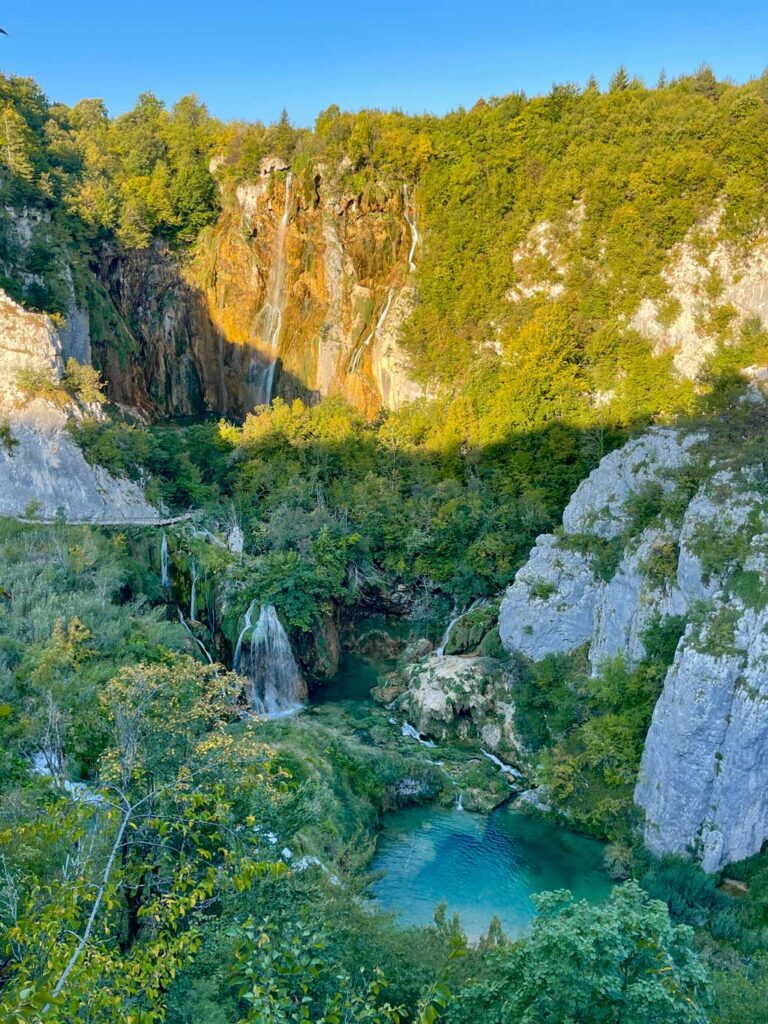
Eight routes, named alphabetically A, B, C, E, F, G, H, and K (which can be mix and matched), make it easy for visitors to navigate around and through Plitvice’s enchanting landscape. Most of the routes are on wooden planks that were constructed in the late 1800s and are meticulously maintained today.
A shuttle bus is available between the two main sections of the park, and two boat crossings – one super short and one longer – ferry visitors across the park’s largest lake, Jezero Kozjak.
If your goal is to explore the entire park on foot, it takes anywhere from 6 to 8 hours.
As I mentioned above there are two main entrances into the park – Entrance 1 and Entrance 2 – each with a large parking lot. The three hotels within the park are all located by Entrance 2.
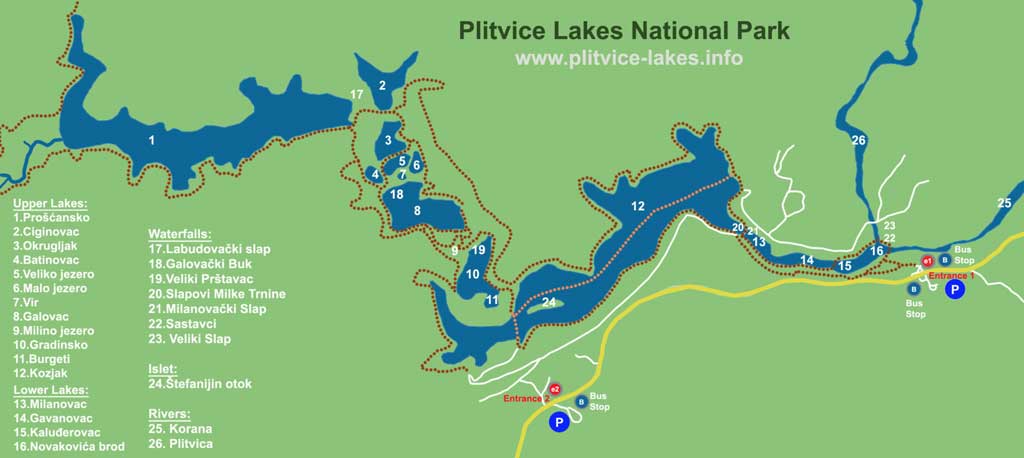
Plitvice’s 8 Routes
The following is a breakdown of the 8 routes in Plitvice by recommended entrance start point:
Routes from Entrance 1:
- Rout A (2.2 miles – 2-3 hours – easy) Starting and ending at Entrance 1, Route A covers the Lower Lakes only with access to the park’s largest waterfall, Veliki Slap, the three-chambered Suplijara Cave, and Kozjaka Bridge.
- Route B (2.5 miles – 3-4 hours – easy) This is similar to Route A but includes the longer ferry crossing across and additional hiking along the northeastern side of Jezero Kozjak.
- Route C (5 miles – 4-6 hours – easy/moderate) One of my favorites, Route C extends Route B to include a visit to the Upper Lakes.
Routes from Entrance 2:
- Route E (3.2 miles – 2-3 hours – easy) This route explores the Upper Lakes only to Proscansko Jezero and includes the shorter ferry across Jezero Kozjak.
- Route F (2.8 miles – 3-4 hours – easy) This route explores the Lower Lakes only, with short and longer ferry rides across Jezero Kozjak.
- Route H (5.5 miles – 4-6 hours – easy/moderate) Also one of my favorites, this route covers the Upper and Lower Lakes, with the longer ferry ride across Jezero Kozjak.
Routes from Entrance 1 and 2:
- Route K (11.5 miles – 6-8 hours – moderate) If you want to explore the whole park, including the higher elevation lookout points above the Upper Lakes, Route K is a fantastic option, but you’ll need the entire day.
Suggested Route
My husband and I arrived at the park on a Wednesday afternoon around 1:30pm after a three-plus hour drive from Rovinj on the Istrian Peninsula. While this is not the ideal time to arrive as crowds are at their peak, we weren’t too concerned since we were staying overnight and planned to return the next day between and 7 and 8am.
On this first day, we kept our expectations low, using our afternoon to take in the park’s awesome beauty and feel things out in anticipation of having a lot more time to explore the next day.
All in all, I thought we landed on a great two-day hiking strategy that allowed us to see the vast majority of the park.
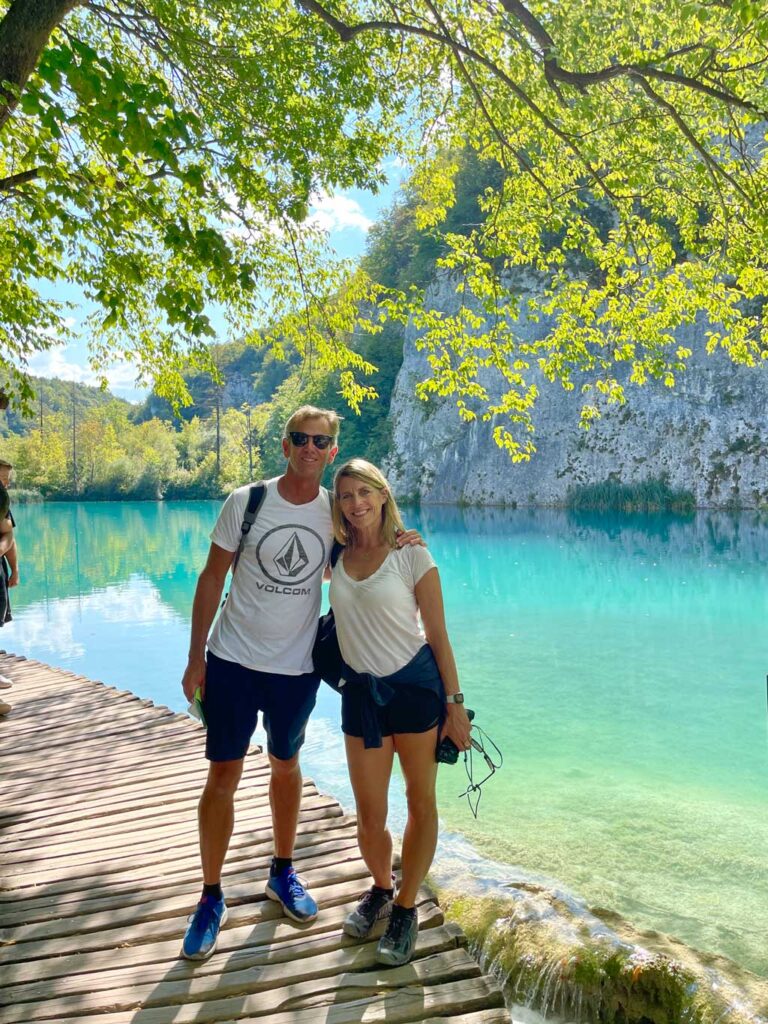
In a nutshell our strategy involved sticking to the the Lower Lakes, plus the park’s famous “great waterfall”, Veliki Slap, and Supljara Cave, on Day 1.
On Day 2, we did a much longer hike that expanded into the Upper Lakes.
Day 1: Routes A, B and part of K
On our first day, we weren’t really sure where to go so we followed the crowd (fortunately it wasn’t too big!) on Routes A/B/C which take you through the Lower Lakes.
We also bought the official park map – which is totally worth the few dollars it cost – so we could take notes and plan our strategy for Day 2.
Along the first part of this route, we were able to enjoy the jaw-dropping aquamarine color of the Lower Lakes and check out Veliki Slap along the way.

Note about Veliki Slap: The area at the bottom of the waterfall gets very crowded with visitors angling for pictures. If you look across from the waterfall (behind you if you are facing it), you will notice a stone stairway going up into the woods and a sign at the bottom that says “No Entry”. We found this very perplexing – where do the stairs go, and why couldn’t we ascend them? At the end of our second day in the park, we discovered the answer to these questions, and it’s pretty amazing so be sure to read on for my Day 2 route suggestion!
Before following Route B to the P3 ferry stop on the north end of Jezero Kozjac, we looped back towards Entrance 1 along Route A to visit the three-chambered Supljara Cave, which requires a relatively steep climb up a series of steps. We figured we’d check out the cave while we were near it in case we didn’t have time during our longer hike the next day.
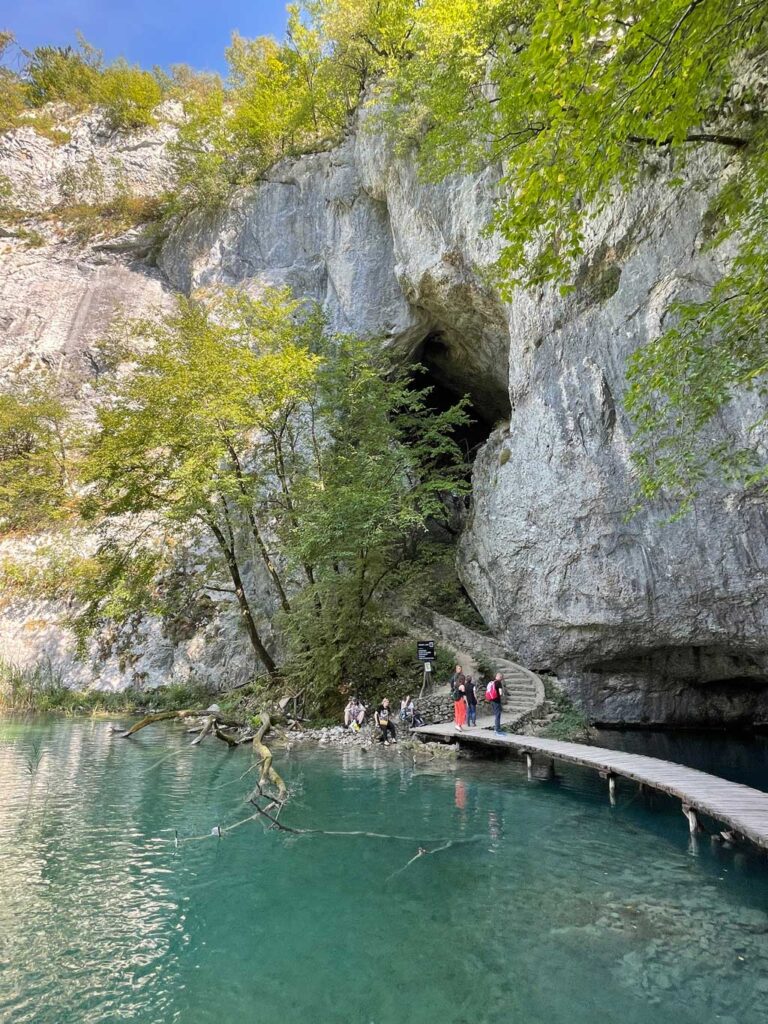
Backtracking through the cave and along Route B to the P3 ferry stop, we boarded the longer ferry that traverses Jezero Kozjac to P2.
At P2, we hopped on the super short ferry to P1, hooked up with the part of Route K that hugs the shore of Jezero Kozjak, and returned to Entrance 1. (Note: At P1, we could have stayed on Route C, which basically parallels Route K at a higher elevation and also takes you back to Entrance 1.)
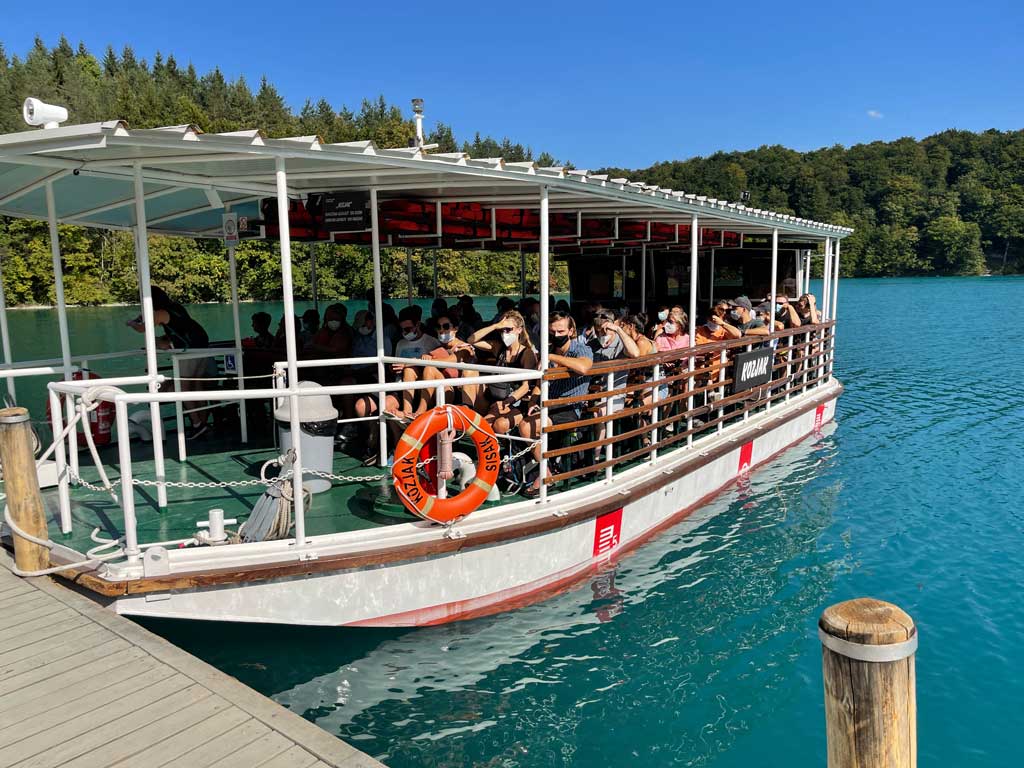
Day 2: Routes C & H, plus cliff views
Day 1 prepared us well for Day 2. Our map already marked up with notes, we entered the park around 7:30am – pleased to see light crowds – and began our more in-depth exploration of Plitvice. I was particularly excited to have the Lower Lakes virtually to ourselves and to see the Upper Lakes for the first time.
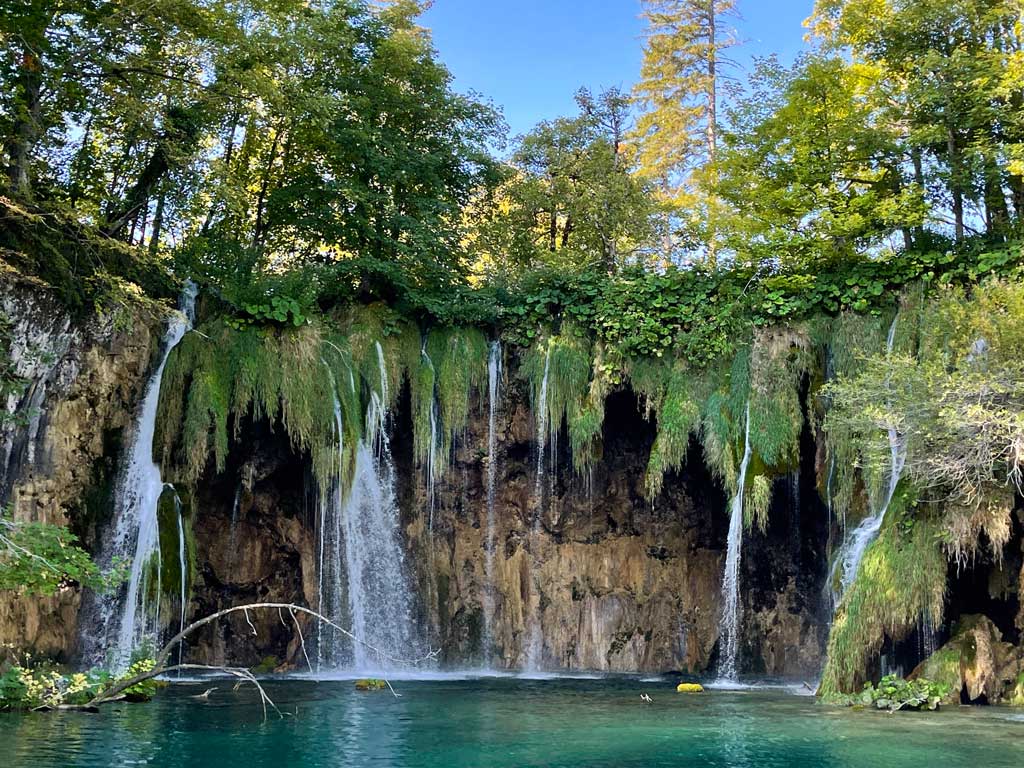
We considered doing the 11.5-mile Route K. But knowing we couldn’t stay too late into the afternoon and having already done a small part of Route K the day before, we opted for a slightly shorter journey that combined what we had heard were the two prettiest routes, C & H. (If we had not already spent a few hours in the park on Day 1, we would have likely opted to do Route K in its entirety.)
We also added to our hybrid C/H route a hiking segment that was technically outside the park. This section, which had a guard at each end checking our ticket, took us to four incredible viewpoints high above the Lower Lakes on the west side of Plitvice. You can see the location of the lookout points in the map above.
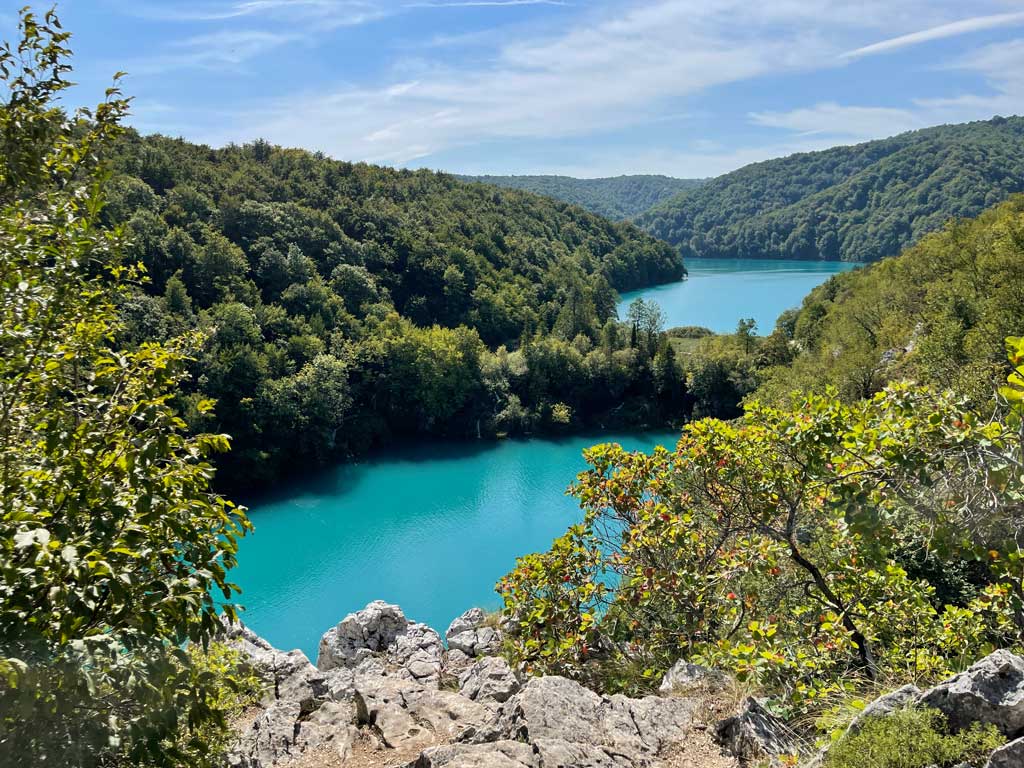
It also gave us the opportunity to experience one of the best aerial views of the park (it’s unofficially called the “postcard view”, but it’s not marked as such on the Plitvice map), and to come back down into the park via a set of steep stone stairs across from the great waterfall, Veliki Slap. Recall this waterfall is not far from Entrance 1, and for people following routes A, B, and C, it gets very crowded. This “back-door” access via the one-way set of stairs (you come down, but can’t go up) is pretty remarkable, and virtually no one knows about it!
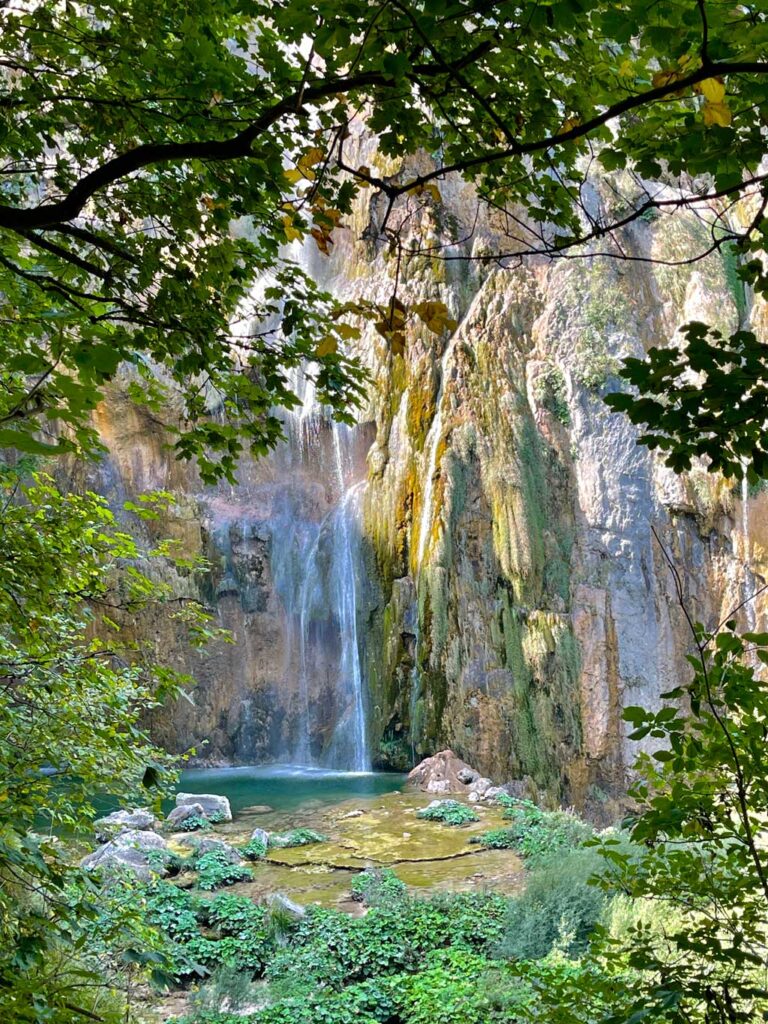
Following are step-by-step instructions for the awesome route we pieced together on Day 2. It was a total of 8-1/2 miles and took about 5-1/2 hours with various stops, plus lunch and bathroom breaks.
- From Entrance 1, follow Routes B/C to the ferry station P3. (Basically, this was a repeat of what we had done the day before, but we did not stop at the waterfall or the cave, thus allowing us to get to the Upper Lakes more quickly and stay ahead of the crowds.)
- Take the longer ferry from P3 to P2. At this time of the morning, the boat will be pretty quiet and it’s a relaxing ride.
- Follow Route C around the Upper Lakes to Station 3 pictured on the map. This is the most beautiful part of the park in my opinion, and best enjoyed earlier in the day before the crowds arrive.
- At Station 3 instead of staying on Route C, which loops back down eventually to the Lower Lakes, follow signs for Route H, which takes you further south to the far end of the park by Proscansko Jezero. At this point, you’ve basically traversed the entire length of the park!
- Follow Route H all the way to P2. There’s a segment of this route that duplicates a small and particularly lovely part of Route C that you’ve already done. Unless you’re visiting during off-season, you’ll notice that by the time you’re back here for the second time, the path will be jam-packed with people. Having already seen the gorgeous waterfalls and taken your pictures, you can quickly make your way through the crowds and be happy you had a chance to experience this section of the park earlier in the day, in relative quiet.
- From P2, take the boat back across Jezero Kozjak to P3. At this point, you may be feeling a little tired. The ferry is a welcome and relaxing break. At either P2 or P3, you may also want to stop for food – both areas have concessions if you don’t have anything packed. (Quick note about food: If you pack snacks and a lunch, there are plenty of lovely spots to enjoy a picnic, but don’t feel you have to. There are enough spots within the park to purchase food and drinks.)
- From P3, you could just follow Routes B/C back to Entrance 1, but since we had already done that the day before, and because we were planning for a bit more adventure on Day 2 anyway, we took a “detour” that I had read about earlier. This “detour” follows an unmarked trail that takes you up to a road above and technically outside the park. (Be sure to have your ticket as you’ll need to show it when you drop back down into the park later.) Along this road are four lookout points over the Lower Lakes.
- From the P3 dock, walk a short distance back in the direction of Entrance 1. You will see a road branch off from the trail on the left. Note that this trail isn’t marked and is hard to find. We ended up having to ask a staff person how to get there by showing them where on the map we wanted to go.
- Follow this road uphill until it levels out. You are now walking along the upper cliffs on the western side of the lakes.
- After you pass by the park gate attendant (who was very helpful in pointing us in the right direction, I might add!), there’s a narrow hiking trail in the woods to the right that parallels the road and the cliffs overlooking the Lower Lakes. Take this trail and follow it north, stopping at the viewpoints I mentioned above.
- After you stop at the third lookout point, walk back to the road, continue north, and cross a small wooden bridge with a log cabin near it.
- Immediately after you cross the bridge, turn right onto another small hiking trail in the woods and walk about five minutes to reach the viewpoint. (Note: See picture below. If you walk pass the sign that says “Restaurant Kozjak” you have gone too far. The trail is to the right, after you cross the bridge and immediately before that sign.
- To return to Entrance 1, backtrack to the steps leading down to Veliki Slap (there’s a gate attendant there so be prepared to show your ticket), walk down the steps, which has beautiful views of the waterfall along the way, and follow signs to the entrance.
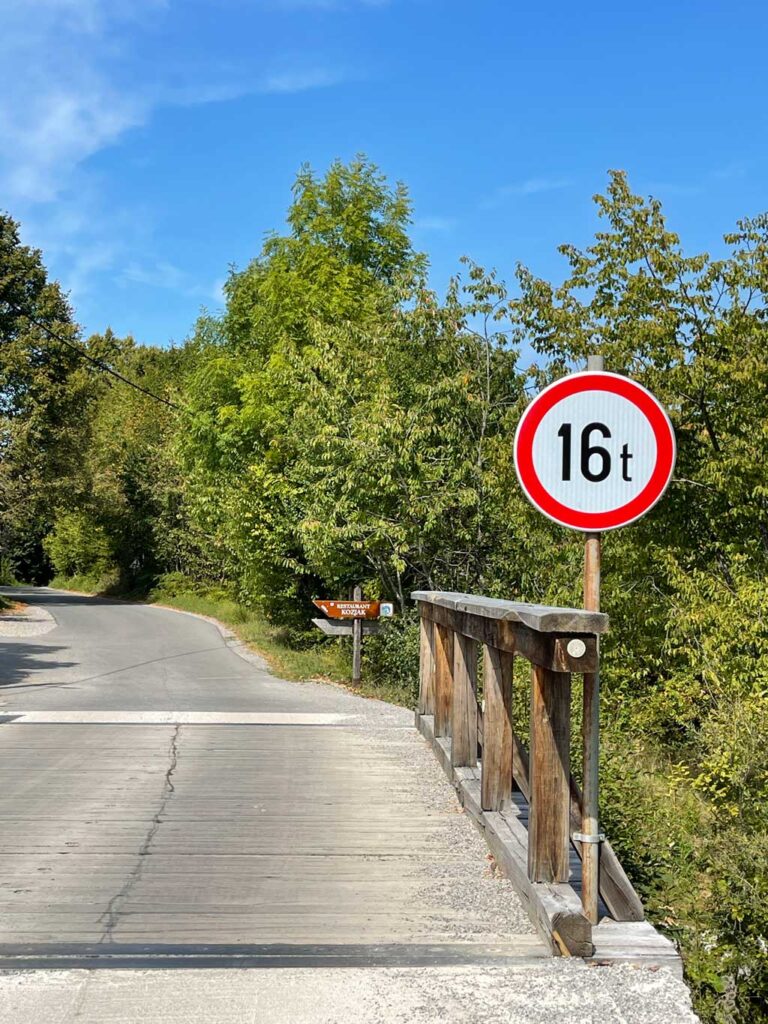
Where to Stay
Within the park, there are three hotels, all located next to Entrance 2: Hotel Jezero, Hotel Plitvice, and Hotel Bellevue, as well as two campsites: Borje Camp and Korana Camp.
The hotels are relatively basic. The big advantage is that you will be super close to the entrance, and you don’t have to pay a separate parking fee. If you’re taking a bus to the park, this is a great option too, as you’ll get dropped off close to your hotel.
Also, if you stay at one of these hotels, you can buy a one-day ticket and visit the park for two days as long as the hotel validates your ticket.
We chose to stay a little outside the park, as there are more options and you get better value for your money. Many families in the surrounding villages rent rooms or apartments to tourists.
We stayed at House Biba & Leona, located in the village of Rastovaca less than a mile from Entrance 1. Our spacious room was on the upper level of a home owned by a couple, with their children and sweet dog and cat. On our evening there after Day 1 at the park, we plopped ourselves in lounge chairs to enjoy the countryside and plot our route for Day 2 in Plitvice.
